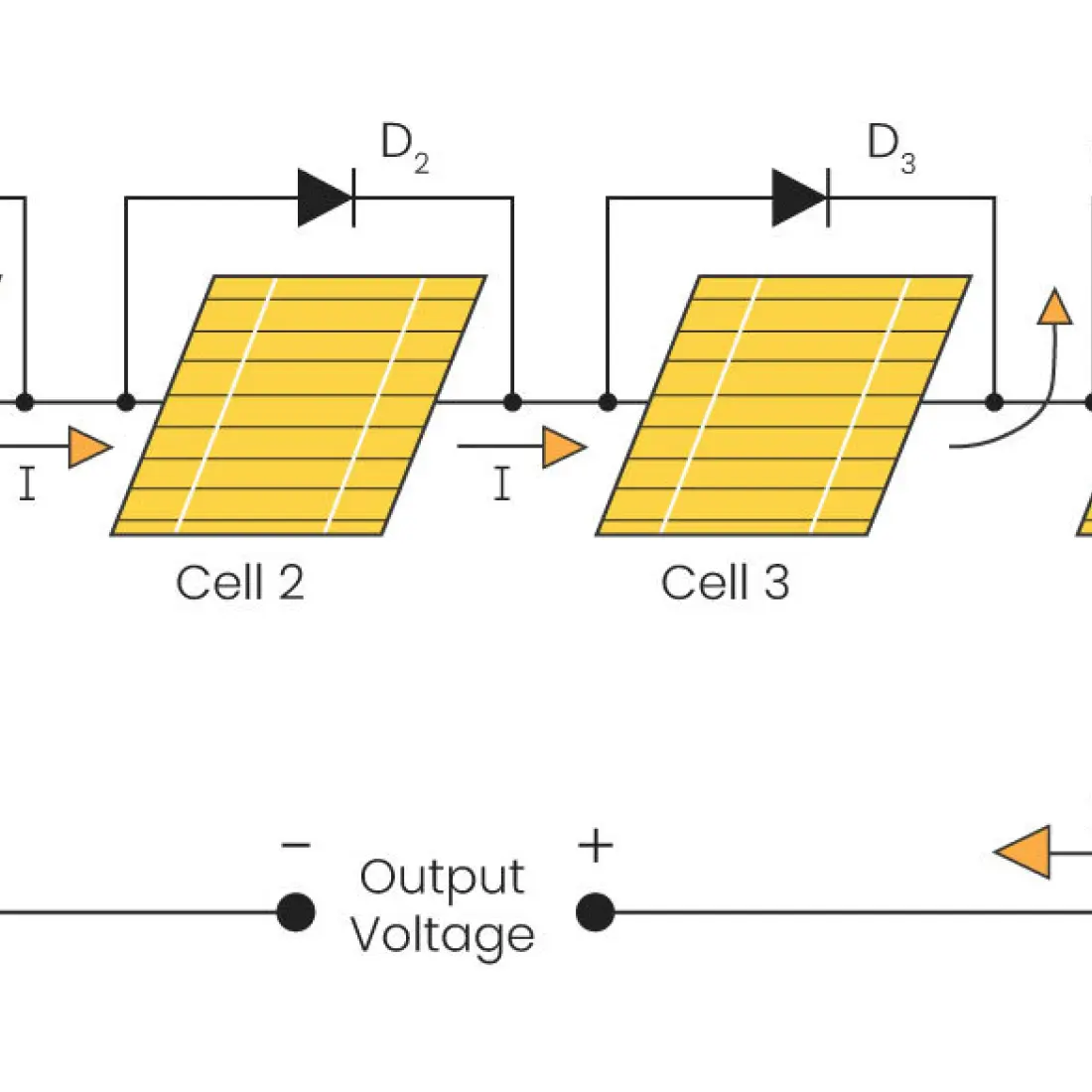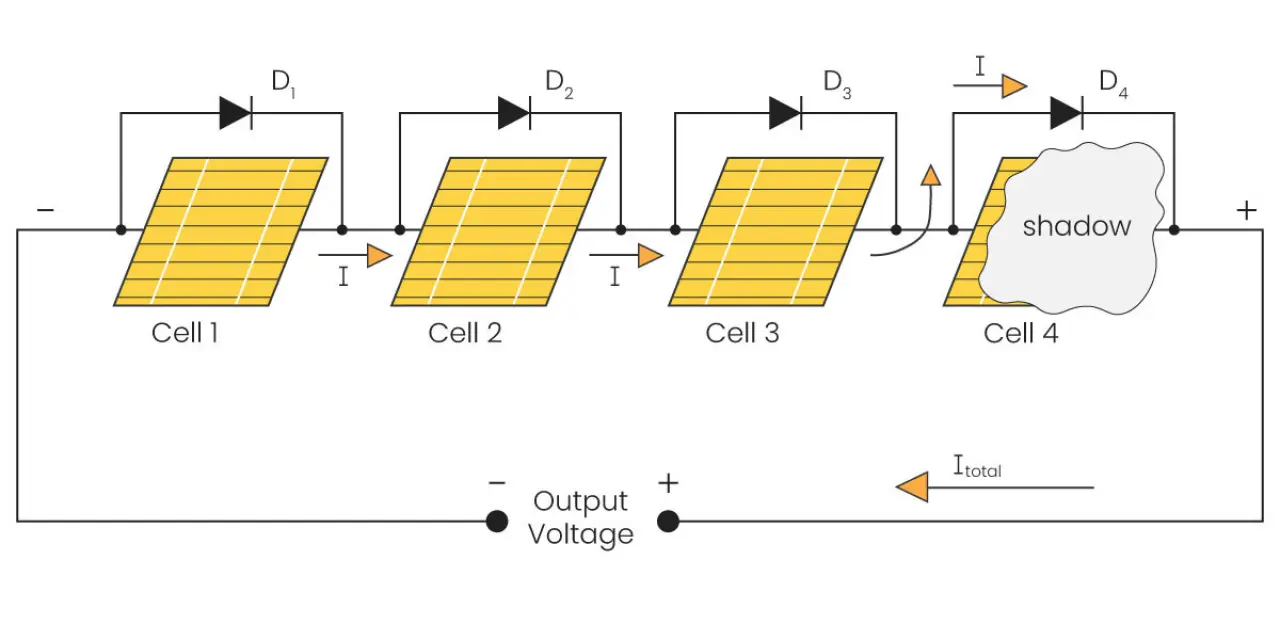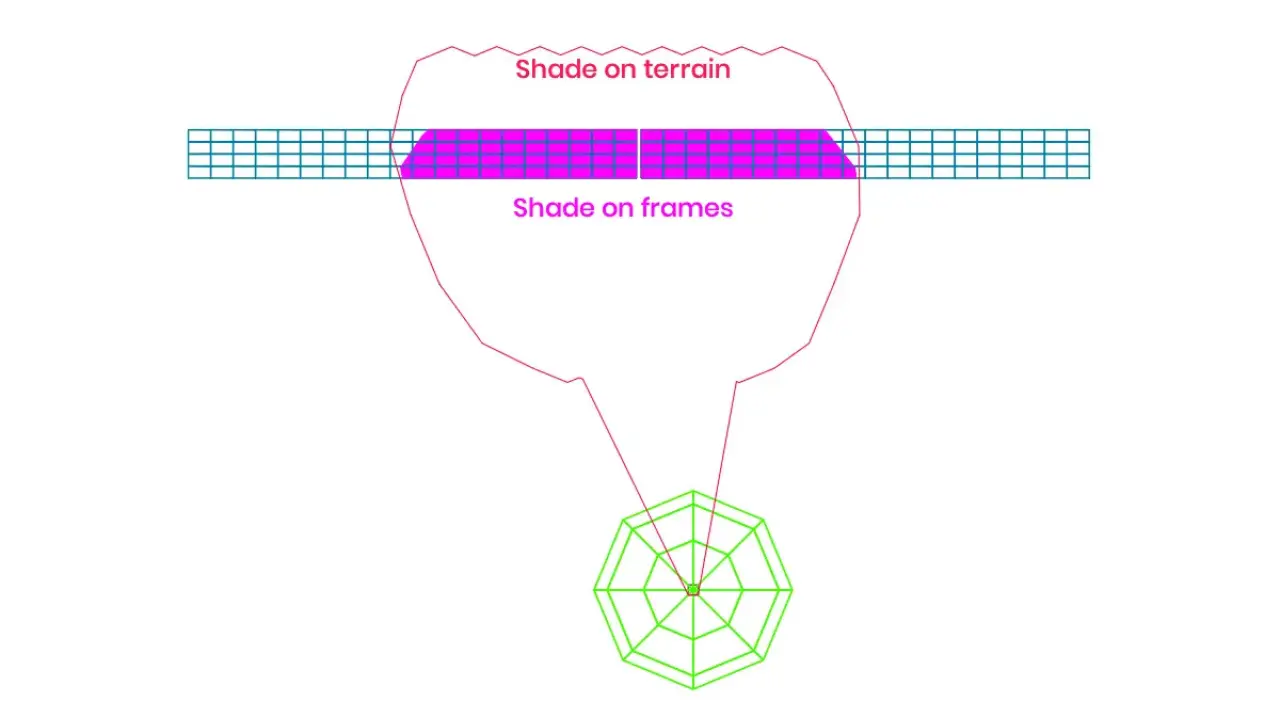How to mitigate shading losses in PV systems?


The irradiance that a PV module receives has a significant impact on its power output. When selecting a suitable installation site, it’s best to focus on locations that offer easy and straight access to sunlight, since it naturally increases project efficiency. To better optimize PV design, solar modules need to be placed where they would get a steady supply of direct sunlight throughout the year. Amongst many factors that limit the irradiance on PV modules, shading caused by the surrounding environment is arguably the most prominent. Depending on how long the module happens to be covered, shading loss can be the breaking point for the project, if the design does not account for this variable.
Hard and soft shading
Shading is a broad term used to describe any type of obstruction between direct sunlight and the module (basically, anything that casts a shadow). The term can be narrowed down and shading losses can be assigned to two categories: hard and soft shading. Hard shading occurs when the module’s surface is covered by a distinct shadow; it can be a shade from a nearby tree or construction, a heavy accumulation of dust can also cause hard shading. Soft shading is often caused by fog or smog, when the strength of the sunlight is reduced, automatically giving off less energy to the cells. Soft shading affects the shaded module’s current, but not the voltage.
How shading affects planning
Careful planning is key to great solar design. Engineers need to fill out the provided space as efficiently as possible to meet the minimum project requirements and boost overall efficiency. The majority of the planning is usually done during the design phase, when the solar park location is evaluated and all the possible obstructions are noted. Such prep-work is necessary to avoid the monetary losses that will come if the design attempts to deal with them mid-way.
Spacing and location are important elements for maximum performance, but other factors that can impact the PV systems need to be considered too, including the differences in the sun’s movements. If placed incorrectly, solar panels might shade each other as the sun moves through the sky (including the changing seasons), which can not only cause losses in power but create technical hazards as well, as in some cases the shaded modules might result in hot spots.
In the design stage, engineers are encouraged to obtain a 3D representation of the PV system and possible shading obstacles, since it provides a more accurate depiction of how the surrounding objects will impact the energy generation. Obstacles within the solar parks need to be evaluated according to the sun’s full path throughout the year. Designers should also consider other weather conditions as well, e.g. rainy season can impact the power generation and, to compensate, some panels might be tilted at a steeper angle, but the higher tilt also casts more shading on the panels behind them.
Ways to mitigate shading losses
Depending on how the PV layout is set up, solar modules can be wired in series (on one string) or have a parallel setup (on different strings). Either of the connection methods will suffer from shading losses, but the performance of the modules connected in series will be more impacted by the partial shading than the parallel ones, since the series of modules all create a singular current flow, and one shaded module can create a blockage for others, which can result in extensive losses. Shading on any types of cells can take away from 10% to 70% of power from the PV system.
If shading is unavoidable, there’s a way to minimize shade loss for particular projects if you consider the mount direction of the module. For example, if a partial shade passes through the module as the sun moves, the panel can be mounted accordingly as a portrait or a landscape to optimize power output and keep the disruption minimal.
Bypass diodes and MLPEs
There are additional tools that help with partial shading. PV systems use bypass diodes, which protect the module and redirect the current through the shaded cell. This improves the overall performance of the module even if some of the shade loss is unavoidable.
Other tools such as MLPEs can also increase the performance of shaded modules. MLPEs can be microinverters that convert DC electricity to AC for each panel, so even if some modules are shaded, it won’t affect others. Another MLPE is a DC optimizer that can boost the current of a shaded module but reduces voltage by the same amount.

Mitigating shading losses with PVcase
PVcase enables the generation of location and time-based shading projections, eliminating the need of any subsequent changes at the later stages of the design process. The shading analysis tool allows solar engineers to adjust table placement according to different shading scenarios at specific time points throughout the year or shading caused by trees, buildings, stations or any other shadow casting objects. Additionally, the system will help optimize power output by generating module placement in even intervals to reduce the number of shaded modules. The user can then take the provided data and import it to PVSyst for further examination of shade loss.

Key takeaways
Shading is one of the most important factors to consider when designing ground-mounted solar parks. Incorrect placement of the modules or improper care can result in energy losses and cost overruns. If partial shading is unavoidable, there are ways to optimize PV design to gain maximum yield. The placement of the panels can be adjusted based on the shading angle or connected in parallel instead of series to offset the shade loss should one of the modules become shaded. There is also a possibility to use additional tools, such as bypass diodes or MLPEs, to ensure that the shaded modules do not interfere with the work of the rest of the cells.